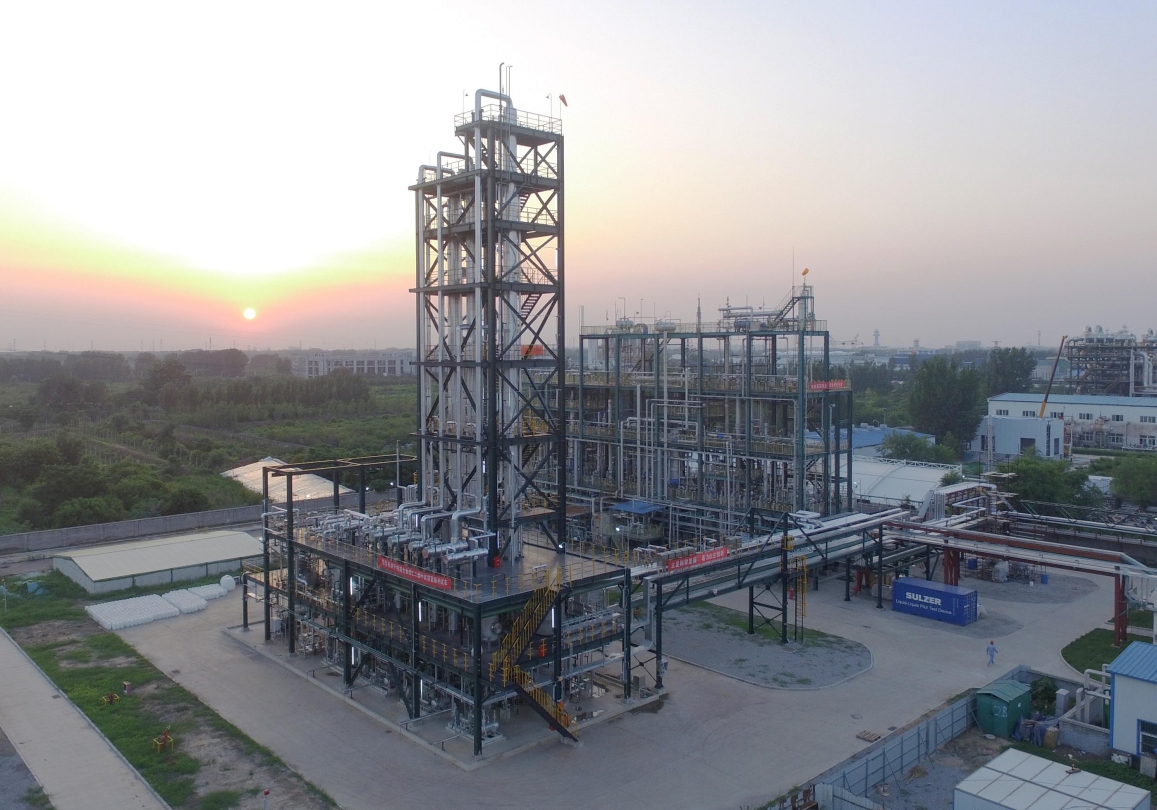A research group led by Prof. ZHANG Tao, Prof. ZHENG Mingyuan, and Prof. WANG Aiqin from the Dalian Institute of Chemical Physics (DICP) of the Chinese Academy of Sciences (CAS), in collaboration with SinoSci Bio-EG (Zhengzhou) New Energy Technology Co., Ltd., has launched a trial for the industrial production of ethylene glycol (EG) from biomass with a production capacity of 1,000 metric tons per year.
Their technique, known as DLEG technology, used catalytic conversion of biomass to bio-EG. The developed pilot plant passed evaluation by the China Petroleum and Chemical Industry Federation on Oct. 17th.
EG is a major bulk chemical with a global consumption of over 30 million tons annually. It is widely used in the synthesis of polyester fibers, bottle chips, antifreeze, paints, and pharmaceuticals. China is the world’s largest producer and consumer, with annual usage exceeding 20 million tons.
Traditionally, EG is produced from petroleum or coal, which has several drawbacks, including the use of non-renewable feedstocks, high CO₂ emissions, and significant energy consumption.
In 2008, prof. ZHANG’s team introduced a method for the direct catalytic conversion of cellulose into EG, offering a new pathway for bio-EG production. Over the years, the team has carried out systematic research on the DLEG process, focusing on both fundamental understanding and industrial applications.

A bio-EG pilot plant at a scale of 1000-ton/a (Image by DICP)
In 2019, Prof. ZHANG' team and collaborators began constructing a 1000-ton pilot plant for the DLEG process. By early 2022, they established the world’s first 1,000-ton bio-EG pilot plant in Puyang, Henan. They finished the 72-hour on-site trial of the DLEG pilot plant in Oct., 2023.
The results indicated that the reaction selectivity for EG was nearly 80%, with the bio-EG product reaching 99.9% purity. The ultraviolet transmittance value of bio-EG also met national standards for PET polyester synthesis. The DLEG technology demonstrated better economic viability than existing bio-EG methods that use the bio-ethanol-ethylene route. Furthermore, the DLEG process is comparable to petroleum-based EG and superior to coal-based EG commonly used in China.
The pilot plant used sugars derived from starch and corn stalks as biomass feedstock for bio-EG production, employing a highly selective catalytic reaction system and an efficient product separation process. It demonstrated the advantages of a short process, mild reaction conditions, and high atom economy, contributing to a green, low-carbon circular economy route for EG production.
“The DLEG technology will support China's sustainable economic development and the realization of the nation's ‘dual carbon’ goal, which refers to peaking its carbon dioxide emissions by 2030 and achieving carbon neutrality by 2060”, said Prof. ZHENG Mingyuan.